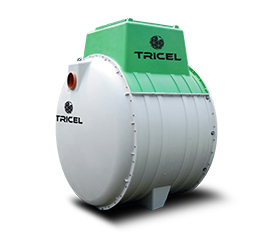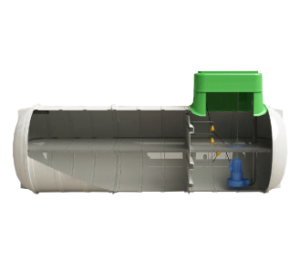PUMPING STATIONS
Wastewater pumping station
Overview
What is a wastewater pumping station? It is an extra tank connected to your septic tank or wastewater treatment plant. The pump station is usually installed when the ground level of the wastewater treatment system is too high. More specifically when it’s higher than the level of the property and a gravity tank cannot be used.
Our domestic pumping system is used for the transfer of wastewater from a house to a wastewater treatment plant at an elevated location. It can also be suitable for an estate where the main pumping station is situated on higher ground. Each case needs an approval from local authority.

Personalised pumping station project
At Tricel, we also design personalised pump stations to suit our customers’ unique requirements with their wastewater treatment systems:
- We adapt the volume of inflow.
- Implement dual or single pumps.
- Shape tank dimensions/capacity.
- Accommodate electrical connections.
- Tailor the pumping distance/height.
How our pumping station works
Tricel pumping stations are used where gravity sewerage is not possible. The tank pumps the water at intervals to the main sewer or wastewater treatment plant. The float switch inside the tank is getting activated when the level of water reaches a certain level in the tank. The process is curbed by the use of the control float. The Pumping chambers contain
- A chamber.
- A Pump.
- Pump controls.
- Float and/or an alarm depending on your needs
- Multiple and backup pumps are also available.
Tricel’ s pump stations are designed to meet building regulations, including Document H1 (“Foul Drainage”). This stipulates that:
“Where foul drainage from a dwelling or building is to be pumped, the effluent receiving chamber should be sized to contain 24 hours inflow to allow for disruptions due to power failures or breakdown. The minimum daily discharge of foul drainage should be taken as 150 litres per day per person for domestic use.”

